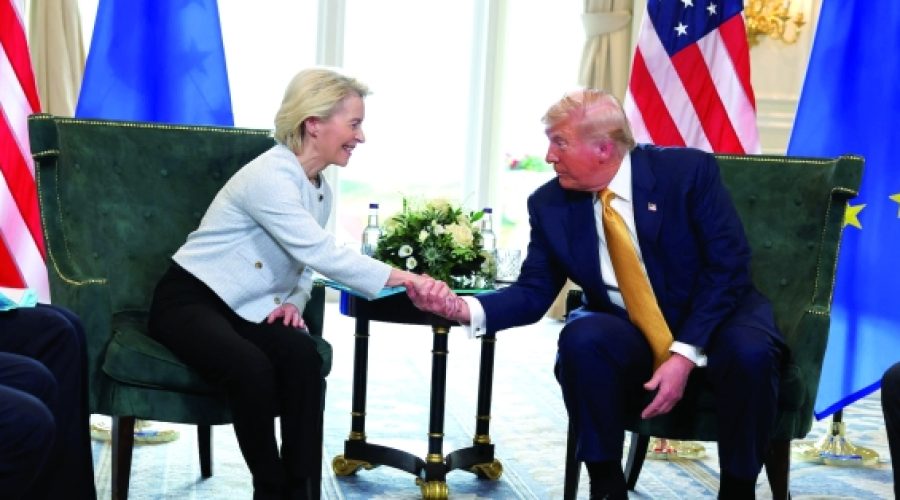US and EU Reach 15% Tariff Deal: How This Averts Trade War Risks for Omani Investors
TURNBERRY, Scotland: On Sunday, the United States and the European Union reached a framework trade agreement that will impose a 15% import tariff on most EU goods—half of the initially threatened rate. This development has effectively prevented a larger trade conflict between the two allies, who represent nearly a third of global trade.
US President Donald Trump and European Commission President Ursula von der Leyen made the announcement at Trump’s luxury golf course in western Scotland after a productive hour-long meeting. This milestone concludes months of rigorous negotiations.
"I think this is the biggest deal ever made," Trump told reporters, emphasizing the EU’s plan to invest approximately $600 billion in the United States and significantly increase its purchases of US energy and military equipment.
Trump indicated that this agreement surpasses a $550 billion deal reached with Japan the previous week, aiming to strengthen ties between the transatlantic partners after years of what he described as unfair treatment of US exporters.
Von der Leyen praised Trump’s negotiating skills, noting that the 15% tariff is applicable “across the board.” She described the agreement as “the best we could get” and stated, “We have a trade deal between the two largest economies in the world, and it’s a big deal. It will bring stability. It will bring predictability.”
The agreement shares critical elements with the framework accord established between the US and Japan, but, similar to that deal, it leaves several questions unanswered, particularly regarding tariff rates on spirits—a contentious issue for both sides of the Atlantic.
According to Trump, the deal anticipates $750 billion in EU purchases of US energy over the coming years along with "hundreds of billions of dollars" in arms purchases. This is likely positive news for several EU companies, including Airbus, Mercedes-Benz, and Novo Nordisk, assuming all details are finalized as planned.
German Chancellor Friedrich Merz welcomed the deal, stating it avoided a trade conflict that would have significantly impacted Germany’s export-driven economy and its substantial auto sector. Notably, German automakers such as VW, Mercedes, and BMW are among those most affected by the existing 27.5% US tariff on car and parts imports.
However, many in Europe perceive the baseline 15% tariff as overly high, contrasting with initial hopes for a zero-for-zero tariff agreement. Bernd Lange, head of the European Parliament’s trade committee and a member of the German Social Democrats, voiced concerns over the imbalance of tariffs, suggesting that the substantial EU investment slated for the US may come at the bloc’s expense.
A senior US administration official indicated that Trump retains the authority to increase tariff rates in the future if European countries fail to meet their investment commitments.
Following the announcement of the deal, the euro climbed approximately 0.2% against the dollar, sterling, and yen within an hour. — Reuters
Special Analysis by Omanet | Navigate Oman’s Market
The recent US-EU trade agreement signals both opportunities and challenges for Omani businesses. The commitment to significant EU investments in the US might redirect trade patterns, providing a potential gap for Oman to capitalize on by enhancing its own export strategies to Europe. Smart investors should focus on diversifying supply chains and exploring partnerships that leverage the shifting dynamics in global trade.



